Cremations, Shrines, and Sadhus: Nepal’s Pashupatinath Temple
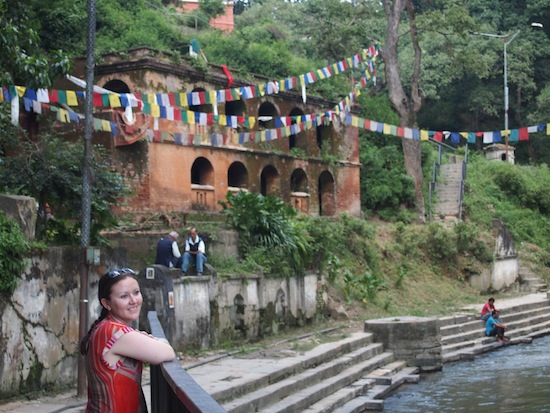

The Pashupatinath Temple was an almost unexpected find for us. It’s one of Kathmandu’s major tourist listings, so it really needn’t have been. It is Nepal’s holiest Hindu pilgrimage site, and the main part of the current complex dates from the seventeenth century, though there is evidence that temples have been present on this site since the fifth.
We came from Boudhanath, the Tibetan Buddhist temple a couple of kilometres to the north, via a side-road through what not long ago would have been villages, but now are part of the urban sprawl. It hadn’t taken us too long to explore Boudha, so as we were in the general vicinity of Pashupatinath, we thought we’d take a look at that as well.
Cremations, Shrines, and Sadhus: Nepal’s Pashupatinath Temple.
The walk took about half an hour, and passed through a rather unkempt but relaxed park on a hill, enjoyed by lounging dogs and couples. From the park we could look down across the temples roofs and smoke rising from the cremations at Pashupatinath.
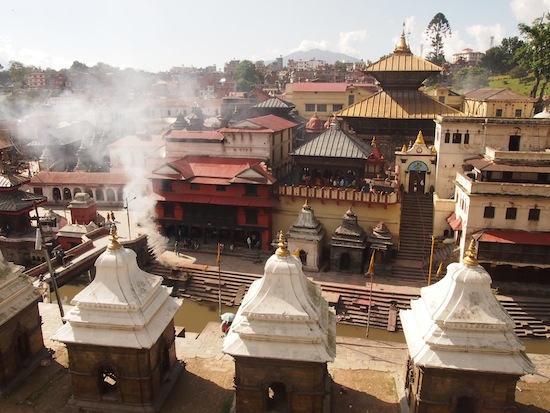
We didn’t realise until it was time to leave, but this was the sneaky way in.
We descended the hill and approached the temple complex along the river that runs through it. In fact, we didn’t realise until it was time to leave, but this was the sneaky way in. At the main entrance, foreign visitors were expected to pay a Rs 1000 entry fee, which we had gotten out of! We didn’t mean to be cheap, but as a resident of Kathmandu on a local salary, I consider this is a very steep fee.
I appreciate the need for entry fees to maintain tourist sites, and in principle do not object to the widespread South Asian practice of having a significantly higher fee for foreigners than for locals. However, I didn’t feel bad sneaking in (accidentally!) to this one, because I spend enough money in Kathmandu and do my little bit to keep the economy afloat.
Pashupatinath is the site of the main burning ghats in Kathmandu, where Hindus cremate their dead. The thought of visiting such a place may seem somewhat macabre, but the atmosphere was very peaceful, if sombre. Rather unnervingly though, the air was smoky and smelled like the remnants of a barbecue. Having death so out in the open does seem natural and calming. Families were sitting beside the remnants of fires, arms draped around each other, holding hands, watching the smouldering embers of their recently deceased return to the elements.
The burning ghats further along the river are where other castes are cremated.
The main golden-roofed Pashupati Mandir can only be entered by Hindus (which, in practice, is anyone who looks South Asian), and the area outside is reserved for the cremation of Brahmins, who are at the top of the Hindu caste hierarchy, only. Attached is a hospice, where the devout come to spend their last days. The burning ghats further along the river are where other castes are cremated.
If you continue further up the hill, on the opposite side of the river from the Pashupati Mandir (temple), you pass a collection of open stone huts and meditation caves used as shelters for visiting sadhus (‘holy’ men). Several dreadlocked and painted sadhus were hanging around as we walked past, asking for money to have a photo taken with them. I find the idea of posing to have a photo with a ‘local’ very strange, as strange as I do the young lads in India who take sneaky (and sometimes not-so-sneaky) photos of me. I was always suspicious of what those lads were going to do with my photo afterwards, and couldn’t understand why they’d want one of someone who clearly wasn’t participating in the act—they could hardly pretend to their mates that I was their Western girlfriend, could they, if I was scowling and looking the other way!?
So I’m not happy being on the other end of the scenario.
So I’m not happy being on the other end of the scenario. Do people go home and say, “This is a photo of me with my friend, the sadhu“? Something so staged seems like an unappealing tourist activity to me. I have realised that my reticence to engage with and take photos of strangers would not make me a good professional photographer, so it’s fortunate I have no ambitions to be.
At the top of the hill is a small fenced-off wooded park described as being the place where Shiva hung out in his incarnation as a deer. We didn’t go in to check out whether any remnants of his visit still existed, but also at the top of the hill is a beautiful collection of Shiva shrines. They look a lot like small cenotaphs of the type found across north India, particularly Rajasthan, but the stone linga (penis, essentially) and yoni (vagina) iconography give them away as shrines to this god.
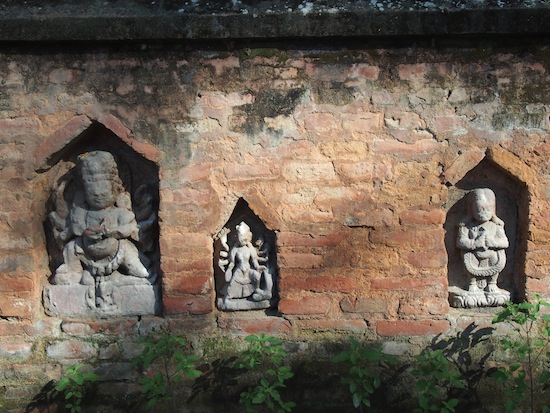
Despite the smoke, the sadhus, the tourists and the monkeys, Pashupatinath was a very relaxing place, and definitely worth the entrance fee (though now you know the back route from a ‘local’!).
Photo credits for Cremations, Shrines, and Sadhus: Nepal’s Pashupatinath Temple by Elen Turner.



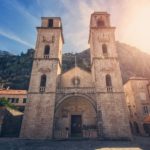
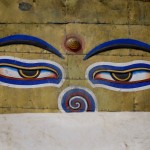

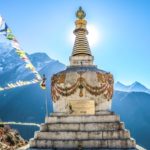


Thanks for republicising this today, Pink Pangea ladies 🙂 If readers are interested in more Nepal-related stuff, I’ve set up a new blog: www.wildernessmetropolis.com Much more on Nepal to follow.